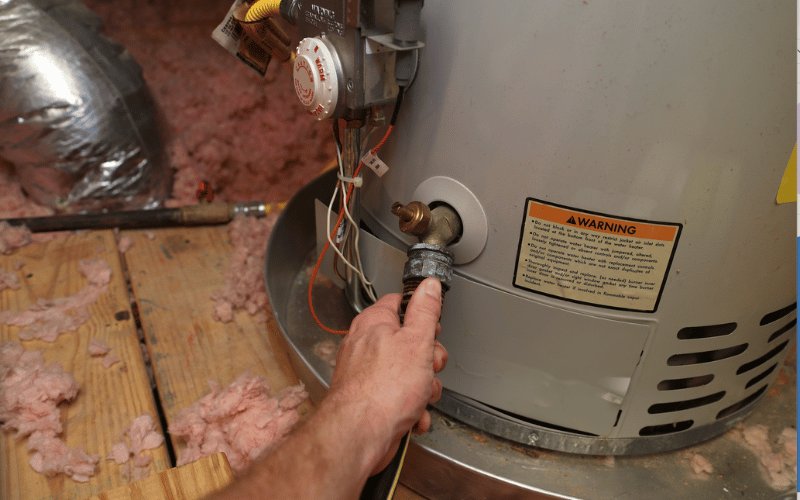Step-by-Step Guide to Maintaining Your Home's Hot Water System
Step-by-Step Guide to Maintaining Your Home's Hot Water System
Blog Article
We have discovered the article involving Tips For Maintaining Your Hot Water Heater listed below on the internet and concluded it made sense to quickly share it with you on this page.

Hot water is vital for everyday comfort, whether it's for a revitalizing shower or cleaning dishes. To guarantee your hot water system runs efficiently and lasts much longer, routine maintenance is vital. This post offers practical suggestions and understandings on just how to preserve your home's hot water system to stay clear of disturbances and expensive repair work.
Introduction
Keeping your home's hot water system might appear difficult, but with a couple of straightforward actions, you can ensure it runs smoothly for several years ahead. This guide covers every little thing from recognizing your hot water system to do it yourself maintenance ideas and knowing when to contact specialist help.
Significance of Keeping Your Hot Water System
Routine upkeep not only prolongs the life-span of your warm water system but additionally guarantees it operates effectively. Neglecting maintenance can lead to lowered efficiency, higher energy costs, and also premature failure of the system.
Indications Your Warm Water System Demands Maintenance
Understanding when your warm water system requires attention can avoid major problems. Keep an eye out for signs such as inconsistent water temperature, odd sounds from the heating unit, or rusty water.
Recognizing Your Hot Water System
Before diving right into upkeep jobs, it's helpful to recognize the basic components of your hot water system. Normally, this consists of the hot water heater itself, pipelines, anode poles, and temperature level controls.
Month-to-month Upkeep Tasks
Regular monthly checks can help catch minor issues before they escalate.
Flushing the Water Heater
Flushing your water heater removes sediment build-up, boosting performance and prolonging its life.
Checking and Changing Anode Rods
Anode poles protect against deterioration inside the storage tank. Checking and changing them when worn is crucial.
Checking and Changing Temperature Setups
Readjusting the temperature level setups makes sure ideal performance and safety.
DIY Tips for Upkeep
You can do a number of maintenance tasks on your own to maintain your warm water system in top problem.
Checking for Leaks
Frequently examine pipes and connections for leakages, as these can bring about water damages and greater expenses.
Evaluating Pressure Relief Valves
Examining the stress relief valve guarantees it works properly and prevents too much stress accumulation.
Insulating Pipelines
Protecting hot water pipelines minimizes warm loss and can save power.
When to Call an Expert
While do it yourself maintenance is beneficial, some concerns need professional proficiency.
Facility Problems Calling For Expert Help
Instances include significant leaks, electric issues, or if your hot water heater is constantly underperforming.
Routine Professional Upkeep Advantages
Specialist maintenance can consist of comprehensive examinations, tune-ups, and making sure compliance with security standards.
Verdict
Regular maintenance of your home's hot water system is crucial for effectiveness, longevity, and expense savings. By complying with these tips and knowing when to look for professional aid, you can ensure a dependable supply of hot water without unanticipated disturbances.
How to Maintain an Instant Hot Water Heater
Before tinkering with your hot water heater, make sure that it’s not powered on. You also have to turn off the main circuit breaker and shut off the main gas line to prevent accidents. Also turn off the water valves connected to your unit to prevent water from flowing into and out of the appliance. 2. When you’re done, you have to detach the purge valves’ caps. These look like the letter “T†and are situated on either side of the water valves. Doing so will release any pressure that has accumulated inside the valves while at the same time avoid hot water from shooting out and burning your skin. 3. When the purge valves’ caps are removed, you have to connect your hosing lines to the valves. Your unit should have come with three hoses but if it didn’t, you can purchase these things from any hardware or home repair shops. You can also get them from retail stores that sell water heating systems. Read the user’s manual and follow it to complete this task properly. When the hosing lines are connected, open the purge port’s valves. 4. You should never use harsh chemical cleaners or solutions when cleaning your unit. Make use of white vinegar instead. It should be undiluted and you’ll probably use about 2 gallons. 5. Now flush your water heater. This task should probably take about 40 minutes. We can’t give you specific directions for this because the procedure is carried out depending on the type, model and brand of your heater. With that being said, refer to the user’s manual. 6. When you’re done draining the unit, you have to turn off the purge port valves again. Remove the hosing lines that you earlier installed on each of the water valves. Put the valve caps (purge port) back in their respective places and be very careful so as not to damage the rubber discs that are found inside these caps. 7. Now that everything’s back in place, check your user’s manual again to find out how to reactivate your water heating system. 8. Once it is working, turn one of your hot water faucets on just to let air pass through the heater’s water supply pipes. Leave the tap on until water flows smoothly out of it. https://www.orrplumbing.com/blog/2014/september/how-to-maintain-an-instant-hot-water-heater/

I stumbled upon that blog entry on How to Maintain Your Water Heater & Prolong its Life while doing a lookup on the web. Do you know anybody else who is in to the topic? Do not hesitate to promote it. I appreciate your readership.
Click Here Report this page